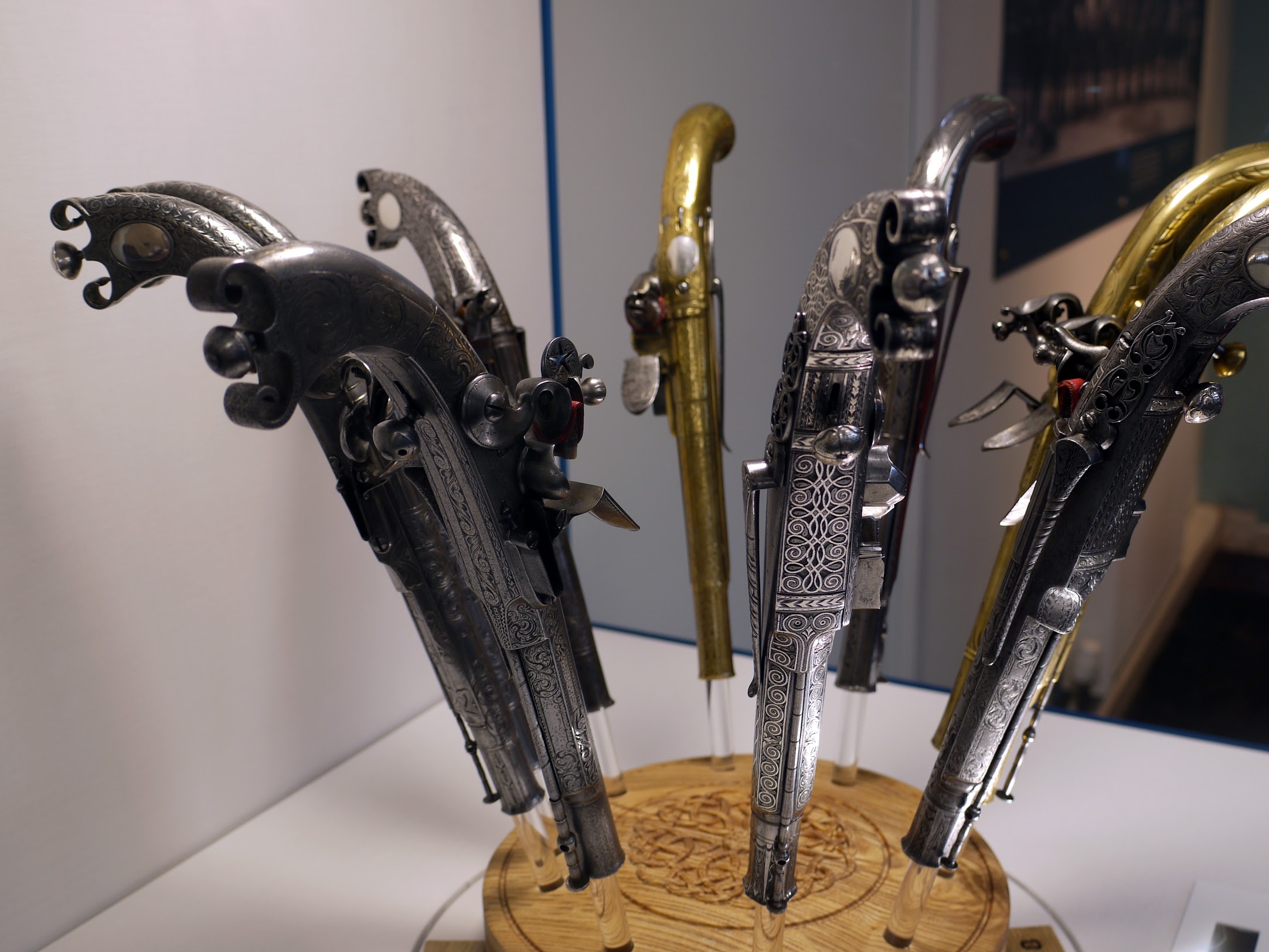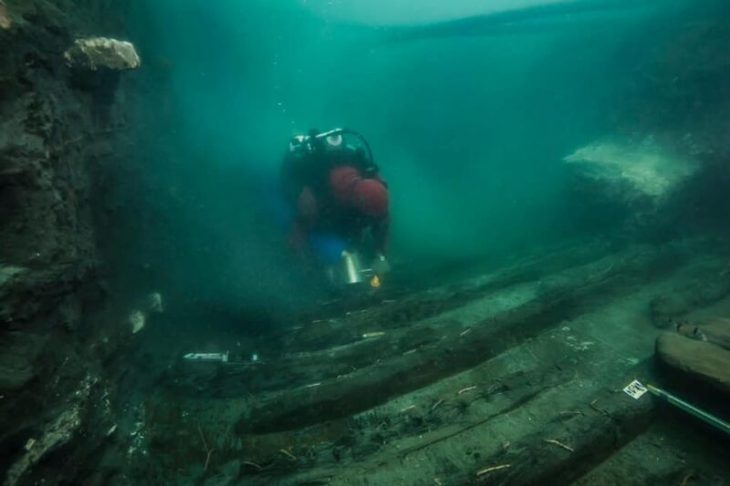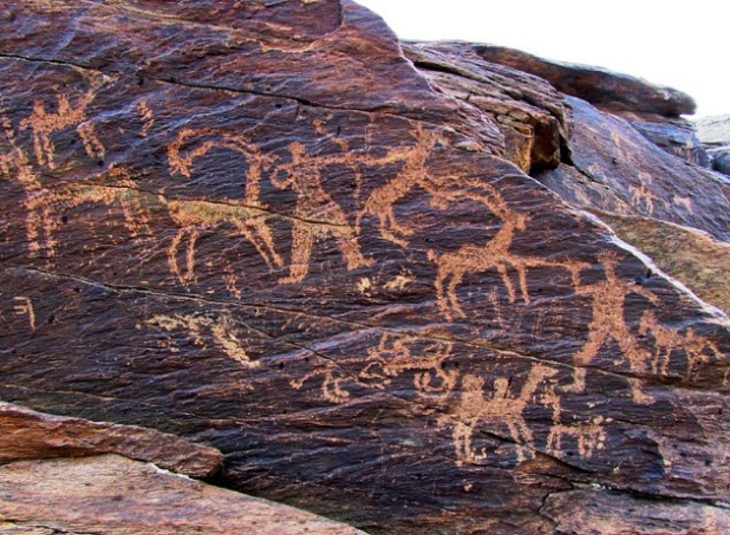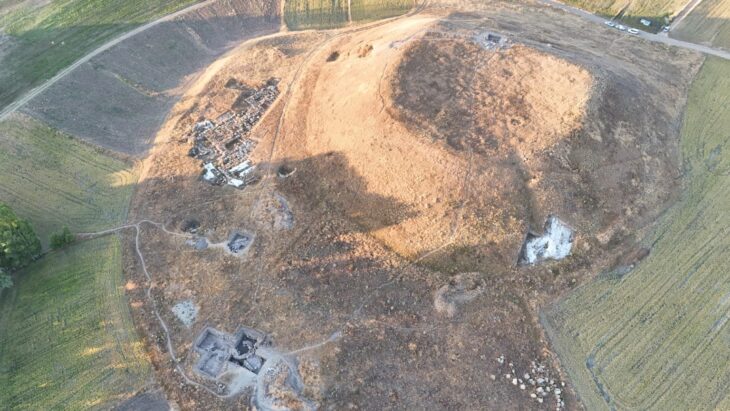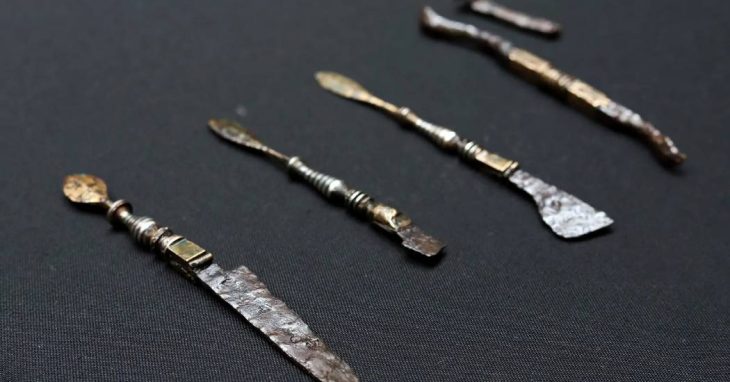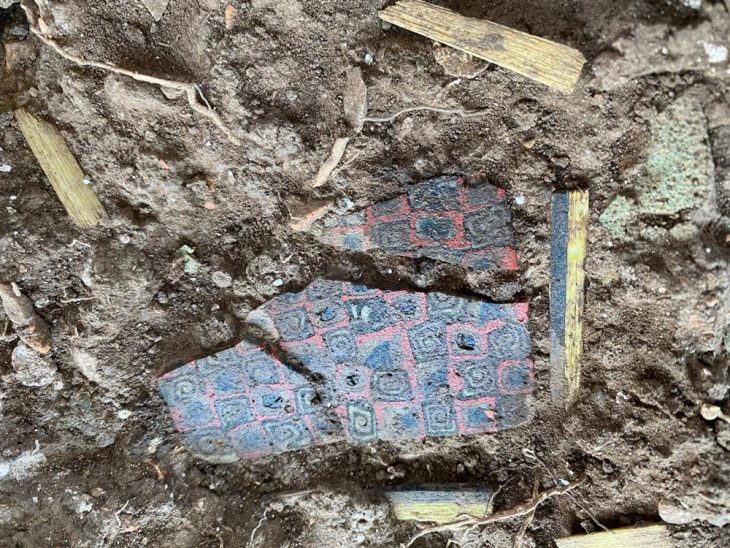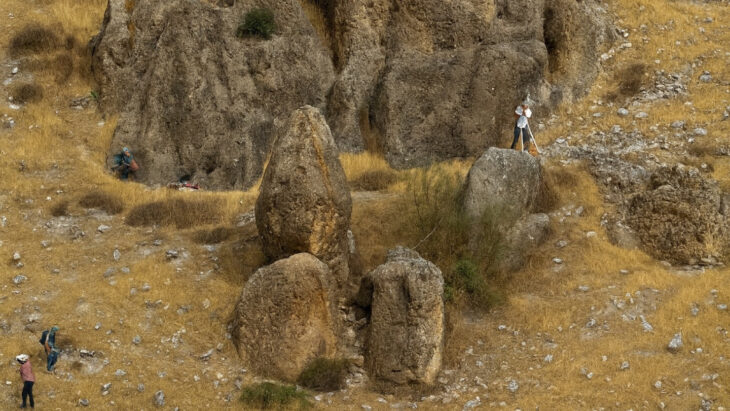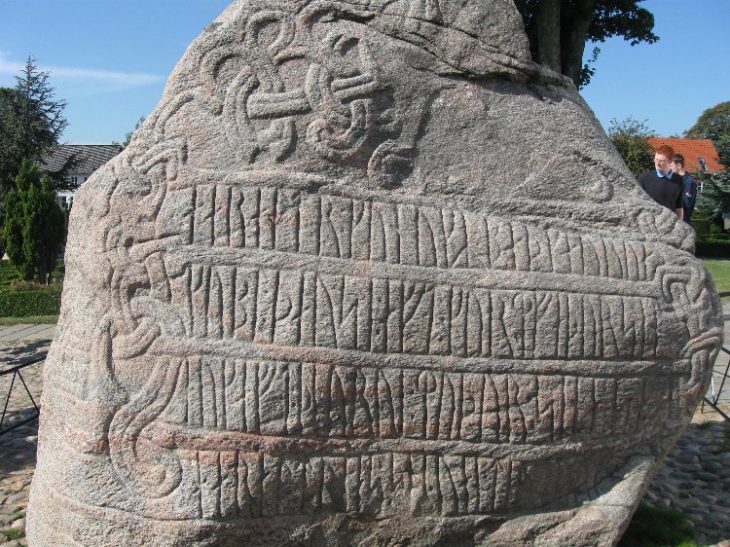A remarkable piece of Scottish history has returned to its roots as a collection of ten exquisite 18th-century pistols, crafted in the village of Doune, are now on permanent public display. The homecoming marks a significant moment for the historic community, with the firearms taking centre stage in new heritage exhibitions at the Doune Information and Heritage Centre.
The exceptional collection was generously gifted to the Kilmadock Development Trust (KDT) by avid collector Andrew Yool, ensuring these pieces of artistry can be admired by all. These pistols represent a distinct style of Scottish flintlock pistols, characterized by their all-steel construction, elaborate engraved decoration, and flintlock firing mechanisms.
Each pistol in the collection, meticulously crafted by six different Doune “hammermen” (gunsmiths) during the 1700s, showcases the exceptional skill and artistry that once made Doune a renowned hub for gunsmithing. Their intricate designs often feature Celtic-inspired motifs, brought to life through delicate engraving and the elegant addition of silver wire inlay. Doune served as Scotland’s primary centre for gunsmithing during the seventeenth and eighteenth centuries.
Mr. Yool expressed his delight at the pistols’ return, stating, “The fact that a representative selection by the most well-known local hammermen has finally found a permanent home on display at Doune for all to see and admire is undoubtedly an occasion for celebration. These flintlock firearms are of unique design, construction and decoration, instantly recognised and appreciated worldwide as iconic examples of Scottish ingenuity, craftsmanship and enterprise, as a result of which they have earned international fame for the village of Doune where they were made 300 years ago.”
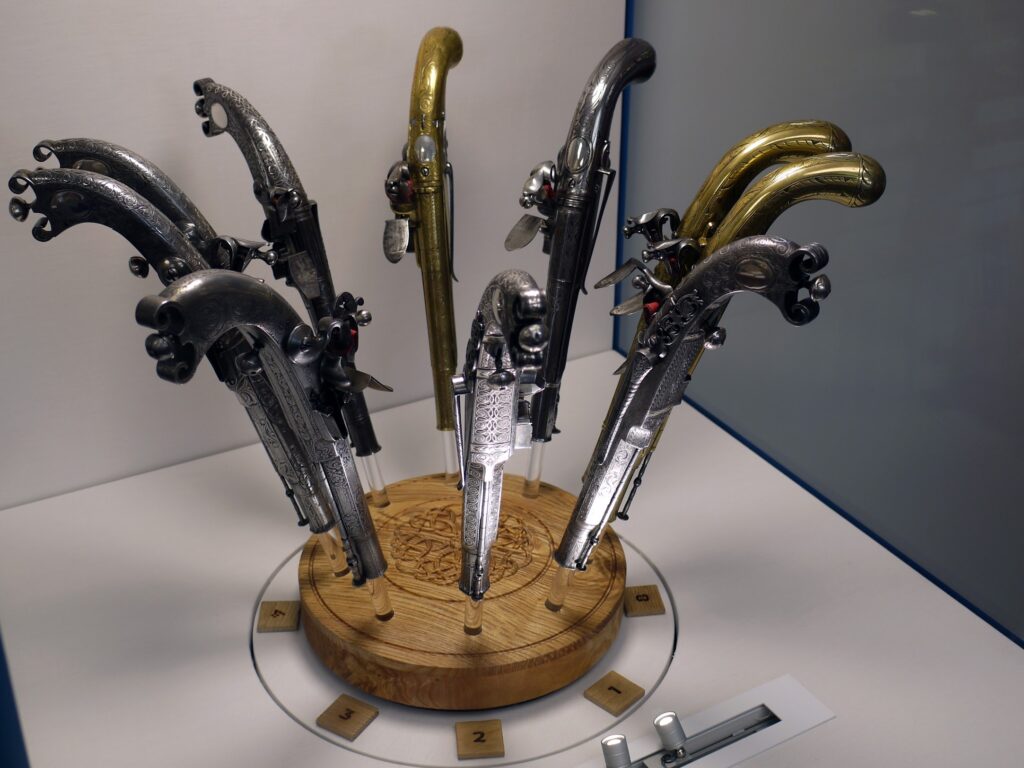
Doune’s legacy in pistol making began in 1646 when Thomas Caddell introduced the gunsmith trade to the village. Facing a scarcity of iron, Caddell ingeniously utilized old horseshoe nails. Through unwavering dedication, he cultivated a level of refinement that defined the distinctive “Doune style,” highly sought after across Europe. His expertise was passed down through generations of apprentices, firmly establishing Doune as the heart of Scotland’s pistol-making industry.
📣 Our WhatsApp channel is now LIVE! Stay up-to-date with the latest news and updates, just click here to follow us on WhatsApp and never miss a thing!!
The impact of Doune’s craftsmanship extended far beyond Scotland’s borders. Following the Jacobite defeat at Culloden, Scottish mercenaries carried their Doune-made arms abroad. Legend has it that the opening shot of the American War of Independence, famously described as the “shot heard round the world” at the Battles of Lexington and Concord in 1775, was fired from a Doune pistol. Today, only a few hundred genuine “Doune Pistols” are known to exist in museums and private collections globally.
Karen Ross, Chair of KDT, shared her enthusiasm, saying, “We are thrilled that such a unique part of Doune’s history is now on display in the village where they were made, and are grateful to Mr. Yool for his generosity. While having a practical function, the pistols really are fine works of art and would have taken countless hours of craftsmanship by candlelight to bring to fruition.” The Kilmadock Development Trust (KDT), a volunteer-run charity established in 2000, works to enhance Doune & Deanston as vibrant places to live, work, and visit.
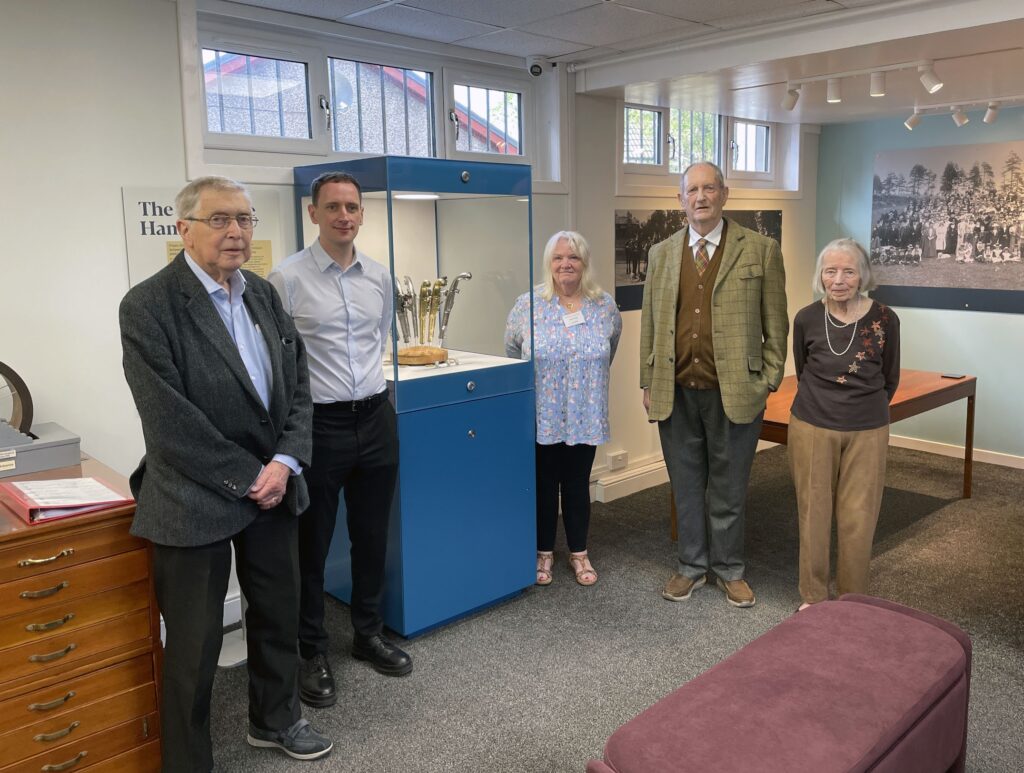
The newly unveiled heritage exhibitions at the Doune Information and Heritage Centre, made possible by funding from the National Lottery Heritage Fund, delve into the rich history of both Doune and the nearby village of Deanston. The National Lottery Heritage Fund stands as the UK’s largest dedicated funder of heritage, utilizing funds raised by National Lottery players to support projects that preserve and transform the nation’s heritage. Run by dedicated local volunteers and open throughout the week, the centre invites visitors to explore the captivating stories of this historic Scottish crossroads.
Kilmadock Development Trust (KDT)
Cover Image Credit: Kilmadock Development Trust (KDT)

